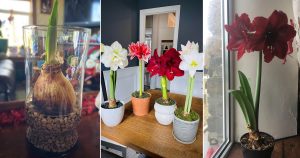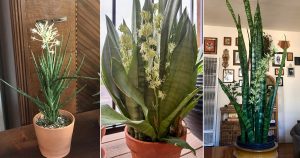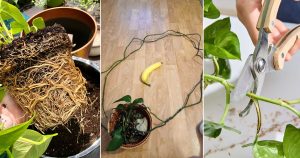Lots o’ people out there are gearing up to plant themselves a good ole fashioned vegetable garden. Or in the case of us balcony gardeners, a not-so-old-fashioned container vegetable garden. People are super enthusiatic and thrilled to be outside soaking up sunshine and thinking about sticking their hands in some good quality potting soil. That is until they see the seed rack and vegetable section of their local garden center.
These eager newbie gardeners want to try tomatoes this year, but when they see all the options out there, they think to themselves, “Holy smokes Batman! How do I decide which one’s right for me?”
In my always humble opinion, I think you should look for three things in a tomato if you’re a beginning gardener looking to grow some red deliciousness on your balcony or patio:
- Hybrid
- Determinate
- VFNT or whatever is recommended for your area
Hybrid
Heirloom varieties are all the rage these days. And hybrids have gotten a bad rap because of the whole genetically modified seed controversy. But I think for a beginning gardener, hybrids are where you should start. Heirlooms can sometimes be a little finicky compared to hybrids.
Just because a plant is a hybrid doesn’t mean that it is genetically modified in the way that Monsanto has modified corn to have pesticides in the plant’s DNA. All “hybrid” means is that one variety of tomato was crossed with another to create a new, third type of tomato. Some of the most beloved varieties of tomatoes are hybrids, such as Early Girl, Better Boy, and Beefmaster.
Hybrid plants have the benefit of what is called “hybrid vigor” which means that–just like mixed breed dogs are often stronger and healthier–so too are first generation hybrid plants (sometimes labeled “F1″). Also, most hybrid plants are specifically bred to produce bigger fruit, earlier or later, on healthier, stronger plants. All great news if you’re a beginner and looking to start off gardening on the right foot.
Determinate
There are two broad typs of tomatoes, “determinate” and “indeterminate.” A determinate tomato grows to a specific height (usually about 3-5 feet tall) and stops, puts out all of its flowers at once, and then all the fruit ripens at pretty much the same time. An indeterminate tomato keeps on growing and growing, putting out flowers and subsequent fruit over the entire growing season until frost kills it. I’ve seen indeterminate tomatoes that are 8 or 9 feet tall.
Determinate plants are easier to stake and/or find a tomato cage for. A lot of beginners can feel overwhelmed by the vigor of indeterminate vines. They also need a larger pot to do their best, and some balconies may get close to running out of head room for an indeterminate type. So be sure to look for a tomato that says “determinate” on the tag or seed packet.
VF/VFN/VFNT/VFNA/VFFNT/FT
When you look at the tomato plants or seed packets, you’ll probably notice that some of them are labeled with a code such as “VFN,” “VFNA,” “VFNT.” This indicates that the plants are resistant to Verticillium wilt (V), Fusarium wilt (F), southern root-knot nematode (N), early blight (A), or tobacco mosaic virus (T). Tomatoes can be attacked by lots of different diseases and organisms. Not every part of the country has every type of disease, but if you ask someone at the nursery what things can be a problem in your area, they should be able to point you in the direction of a tomato that has the right combination of resistances.
Here are some varieties to consider…
Small & Compact Plants:
- Better Bush
- Patio
- Small Fry
- Toy Boy
Cherry:
- Cherry Grande Hybrid VF
Standard:
- Bingo (Known for having a great taste)
- Biltmore
- Celebrity
- Early Bush (Good for coastal areas)
- Early Girl
- Floramerica (AAS winner)
- Jackpot
- Legend (grows extremely large fruits)
- Mountain Belle
- Mountain Delight
- Mountain Gold
- Mountain Pride
- Mountain Spring
- Roma VF
- Royal Flush
- Shady Lady
- Sub Arctic Plenty (great for Northern gardeners with a short growing season)







